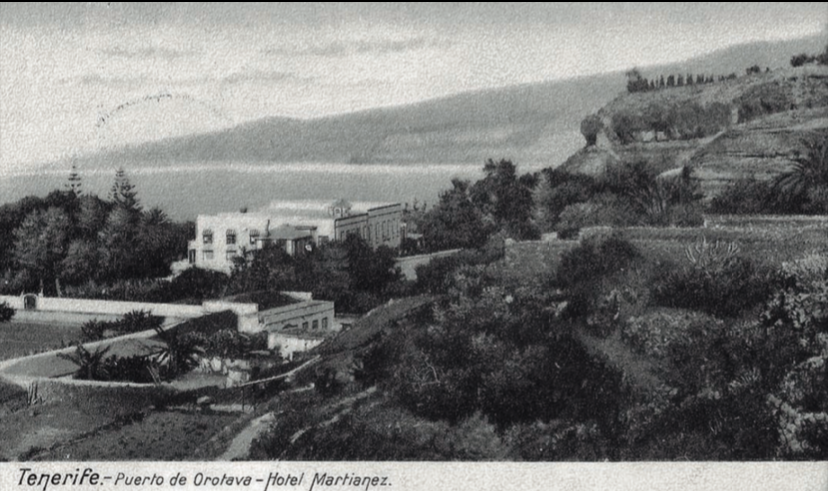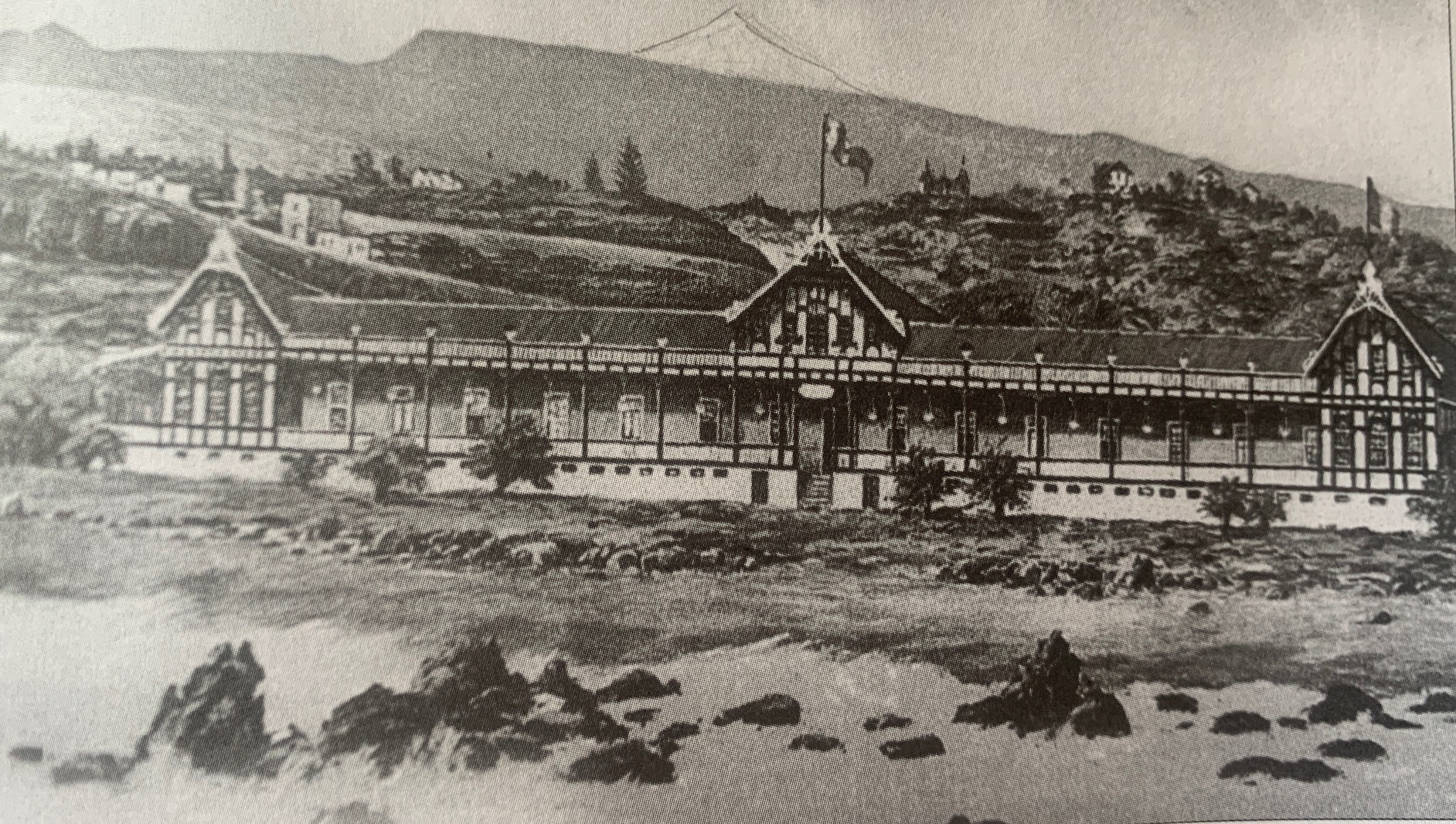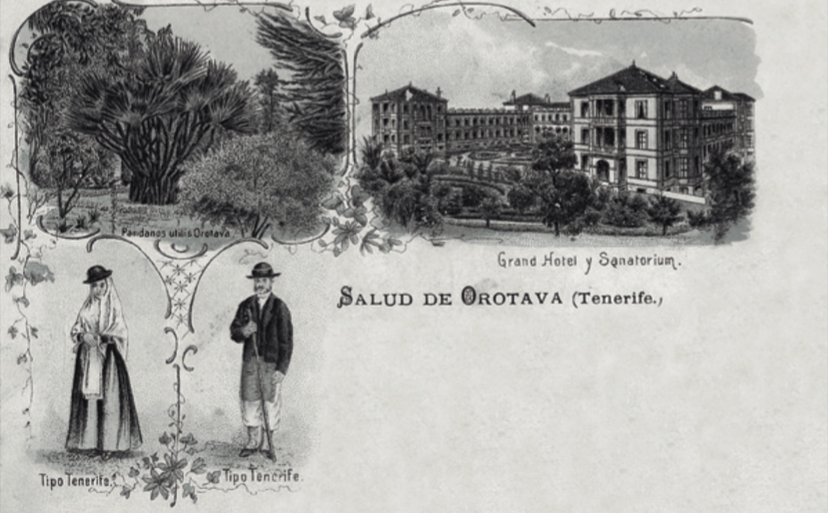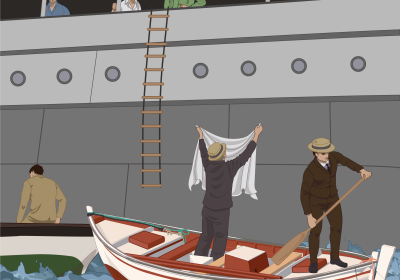Writing about this municipality is above all to write about the precursor enclave of health tourism in the Canary Islands.
When we nowadays “look” at this coastal town, once a fishing village, we could hardly imagine that its buildings, streets and people harbour such a peculiar past.
We can start off with the Plaza del Charco, crowned by its beautiful laurels of the Indies and accommodating one of the very first inns: the one run by Pedro Aguilar, which was to receive the French conservative politician Baron Gabriel Belcastel, together with his daughter who was ill with bronchitis.
At that time the trips and stays were long, and the cures tended to be of a respiratory nature, as was the case of Belcastel’s daughter, who stayed at Aguilar’s inn for several months, and became very popular due to her strength of recovery. Her farewell was a feast well remembered by the locals. Even more so was the praise she herself dedicated to the island, Puerto de la Cruz and the Orotava valley upon her return trip, in her work Les Îles Canaries et la Vallée d’Orotava au point du vue hygienique et medical, Paris 1861. Undoubtedly, in her opinion, the climate played a very favourable factor in her healing. It is therefore not surprising that studies on climate were carried out by the researchers Honneger, Öhrvall and Bierman, which followed the first ones by Belcastel himself.
The then subdelegate of medicine and surgery of the smaller Western Canary Islands, Victor Pérez González, would follow in this direction with his Climat de la Orotava or Vegetation aux illes canaries in relation to climate and the applications of plants for natural medicinal use. This doctor received numerous European and local awards for his work against “yellow fever”. Of particular note was the care he gave to an illustrious traveller: Emperor Josef of Habsburg, brother-in-law of the Austrian Empress Sissi, who would also bring fame to this locality, after making a stopover on his journey to Mexico.
This doctor is honoured with a square, just a couple of minutes’ walk from the Plaza del Charco: the “Plaza de Victor Pérez”. His son, Jorge Pérez Ventoso, followed him in the same profession as a naturalist doctor. With his work A selection of botanical and other papers he played an important role in England, encouraging others such as Ernest Hart with his It’s physical practice and climatology in spreading the usefulness of the island’s conditions for the treatment of illnesses such as bronchitis, pulmonary tuberculosis, gout, rheumatism, etc.
Thus Ernest Hart, “honoris causa” in his country, wrote A winter trip to the fortunate Islands and encouraged others to turn Puerto de la Cruz into a real health laboratory.
In view of the fame, Hart went there to see for himself and saw the success of the first health hotel, which opened on 1 September 1886: Sanatorium or Orotava Grand Hotel with just 30 rooms (later Hotel Martiánez).
It would be followed by the Gran Hotel Taoro, later managed as Hotel Kurhaus Humboldt (see initial photo), a sanatorium hotel with an extremely good reputation, attracting German-speaking visitors and adding to the fame of the later disappeared Thermal Palace.

Visitors who could not afford such expensive stays or those who couldn´t find a hotelroom, were accommodated in inns often run by nurses, such as those in Calle Cabeza or the Hotelito Sitio Cullen belonging to the Fregel family in Calle Quintana, or those in Calle Zamora. In addition to the recreational-health aspect, there were other attractions such as the spa springs, visits to caves with boats or excursions to Mount Teide.
This incipient health tourism was an incentive for the local population, who still lived mainly from agriculture and fishing and who needed a revulsive to get out of the crisis and improve their quality of life, which had been weighed down for a decade by the reduction of cochineal, the natural dye on which they depended, and which was then being replaced throughout Europe by a synthetic one: aniline.
Naturalists such as Alexander von Humboldt, Sabino Berthelot, André-Pierre Ledru and Piazzi Smith would undoubtedly help in this revolution, for it should not be forgotten that when the islands were covered with orchards, vineyards and temperate forests, these naturalist travellers had already begun, through their writings during their stopovers on Tenerife, to convey the clear advantages of its mild climate, its plants and its people.
Source: El turismo en la historia del Puerto de la Cruz a través de sus protagonistas. (Tourism in the history of Puerto de la Cruz through its protagonists). González Lemus Nicolás.
Through this publication, APIT Tenerife echoes the research of its associates and supports the generation of knowledge by its associated tourist guides. However, the opinions expressed by the authors of the articles do NOT reflect in any way the position of the Association. APIT Tenerife is an apolitical, professional and inclusive entity that promotes Canarian heritage of any kind. If you want to contribute elements to the debate on the topics discussed here, we invite you to contact the author whose contact details appear in the signature of the article and in the list of associated guides.




